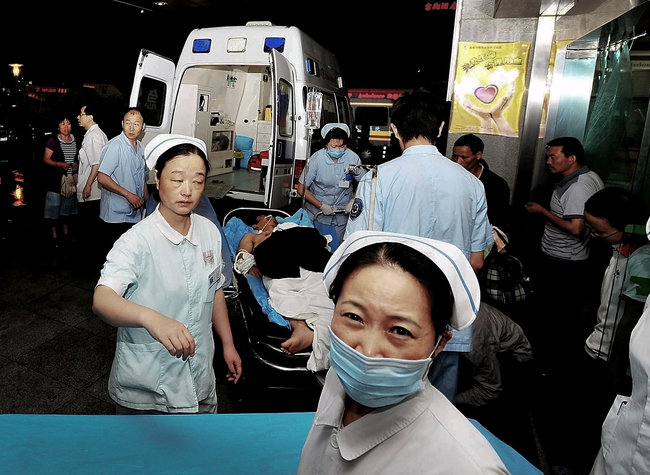The list accompanied a report detailing troubling practices inside many of the technology giant’s suppliers. Apple said audits revealed that 93 supplier facilities had records indicating that over half of workers exceeded a 60-hour weekly working limit. Apple said 108 facilities did not pay proper overtime as required by law. In 15 facilities, Apple found foreign contract workers who had paid excessive recruitment fees to labor agencies.
And though Apple said it mandated changes at those suppliers, and some showed improvements, in aggregate, many types of lapses remained at general levels that have persisted for years.
Labor rights groups, journalists and academics have long asked Apple to reveal the names of its suppliers. While other companies have published the names of firms providing parts and services, Apple has resisted, with some inside the company citing the firm’s culture of secrecy.
Judy Gearhart, executive director of the International Labor Rights Forum, an advocacy group for workers’ rights, was disappointed Apple did not reveal the location of the suppliers on its list, complicating outside efforts to monitor the progress at the factories. Some plants on the list are relatively unknown, with Web sites that do not list where facilities are situated.
“It’s a bit of a half-step really to say, ‘Here are the names of the factories, go look through a haystack,’ ” Ms. Gearhart said. “But it’s a start.”
Steve Dowling, an Apple spokesman, declined to comment beyond the report.
The calls for Apple to disclose suppliers became particularly acute after a series of deaths and accidents in recent years.
In the last two years at companies supplying services to Apple, 137 employees were seriously injured after cleaning iPad screens with n-hexane, a toxic chemical that can cause nerve damage and paralysis; numerous workers have committed suicide, or fallen or jumped from buildings in a manner suggesting suicide attempts; and in two separate explosions caused by dust from polishing iPad cases, four were killed and 77 injured.
Apple, based in Cupertino, Calif., posted the supplier list on its Web site on Friday as part of something it calls its supplier responsibility progress report, a document typically published in February. Apple provides aggregate statistics of audits examining labor, discrimination, worker health and safety, environmental and other practices.
The list consists of 156 companies, accounting for 97 percent of what Apple says it pays to its suppliers. Apple’s tally of its suppliers includes many big-name companies like Intel and Nvidia, both makers of chips for Apple’s Macintosh computers, along with other parts makers like Samsung Electronics, Toshiba and Panasonic. The list also includes less recognized companies like Zeniya Aluminum Engineering, Jin Li Mould Manufacturing and Unisteel Technology.
But the list excludes many of the secondary suppliers — companies that provide parts to firms that directly contract with Apple. For instance, though the American glassmaker Corning has manufactured the strengthened glass in iPhones, it does not appear on the list because it technically does not contract with Apple, but with an intermediary that finishes the glass before it is delivered to an assembly factory.
Apple said 229 audits were conducted as part of this year’s supplier responsibility report, an 80 percent increase over the number the year before. The company said the facilities where repeat audits were done had shown fewer violations.
In an e-mail to Apple employees, Timothy D. Cook, the chief executive, said Apple had used its influence to improve living conditions for the people who make its products, including employee housing. “To meet our requirements, many suppliers have renovated their dorms or built new ones altogether,” he wrote.
This is the sixth such report Apple has issued. The company began conducting audits and publishing reports after news articles in 2006 showed poor working conditions at Foxconn, a Chinese manufacturer of Apple products.
Apple said in the report that it recently became the first technology company to join theFair Labor Association, a nonprofit group that aims to improve conditions in factories around the world. Apple said it would allow the association’s auditing team to gauge the performance of Apple’s suppliers against a code of conduct and publish the results.
“We welcome Apple’s commitment to greater transparency and independent oversight, and we hope its participation will set a new standard for the electronics industry,” Auret van Heerden, the association’s president, said in a statement.
Jeff Ballinger, a global labor activist, said he was skeptical that transparency alone would change the behavior of Apple’s suppliers, unless Apple was willing to pay more. “They can say forced overtime is a big problem, can you give Saturday afternoons off?” he said, adding that the factories’ “response is going to be raise the prices you give us.”
“That they don’t want to do,” he said of Apple.
By NICK WINGFIELD and CHARLES DUHIGG Published: January 13, 2012
A version of this article appeared in print on January 14, 2012, on page B1 of the New York edition with the headline: Apple Lists Its Suppliers For 1st Time.






You must be logged in to post a comment.